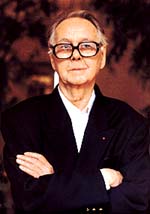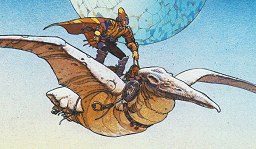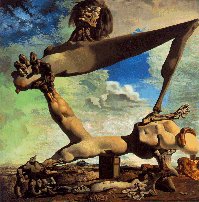 |
1908-1997
|
He was born on April 9, 1908, in Pecs, Hungary, and, forsaking the medical studies he had begun in Budapest, attended the Polodini-Volkmann Academy in 1927, then (1928-1929) the Muhely Academy (the "Bauhaus of Budapest"), where Laszlo Moholy-Nagy was one of his teachers and where he encountered the work of Mondrian, Malevich, Kandinsky, and Gropius. In 1930 he settled in Paris, where he initially worked as a commercial graphic artist. He acquired French nationality in 1959. During the 1930s he was influenced by Costructivism, but Vasarely’s interest in geometrical abstractions, and the potential of using them to produce striking visual effects, began in the late 1940s. The basic components were squares, circles, and triangles, and horizontal and vertical parallel lines; by drawing lines at varying distances from one another and introducing undulations, Vasarely created the illusion of three-dimensional space. His style reached maturity in the mid-1950s and 1960s, when he began using brighter, more vibrant colours to further enhance the suggestion of movement through optical illusion. Representative works include "Sirius II", "Ondho", and "Arny-C". In their fully developed form, Vasarely’s geometrical abstractions produce mesmerizing, almost hallucinatory effects that entrap the eye and often create a very immediate sensation of movement. For example, VEGA PER (1969, Honolulu Academy of Arts) is a canvas covered with an overall pattern of red and green dots. By the manipulation of foreshortening and perspectival effects, the centre of the picture plane appears to balloon out at the viewer, in the manner of a net into which a football has been thrust. Other compositions lead the eye headlong into illusory tunnels or corridors formed by squares that "disappear" in the "depths" of the canvas. Vasarely called this technique cinetisme. Vasarely’s paintings are some of the most powerful examples of Op Art. He was very influential on younger Op Artists and was instrumental in forming the Groupe de Recherche d’Art Visuel in Paris. Much of his work is housed in the Musee Vasarely, at the Chateau de Gourdes in Vancluse departement, southern France which he opened himself in 1970. In 1970 he also established the Foundation Vasarely, which in 1976 took up quarters near Aix-en-Provence in a building that he designed. Vasarely also worked as a sculptor, and collaborated with architects, producing a mural and an aluminium relief for the University of Caracas (1967) and contributing to the design of the French pavilion at Expo ‘67 in Montreal. Victor Vasarely died on 15 March 1997 at his home in Annet-on-Marne. Selected bibliography: Diehl, Gaston, Vasarely (1972); Joray, Marcel, Vasarely, vols. 1-4 (1969-80); Spies, Werner, Victor Vasarely (1971); Vasarely, Victor, Vasarely (1965). As a tribute to this great painter I have prepared this web presentation of a collection of his paintings. The images have been "harvested" from the world wide web over the last years and I am pleased to share them with people who appreciate or wish to study Vasarely's work. |
First - Next - Last 1 - 2 - 3 - 4 - 5 - 6 - 7 - 8 |
1. This is not a commercial art presentation, nor am I in any way related to a commercial art enterprise. 2. I do not know the value of Vasarely's paintings, nor can I advise you where to find that out. 3. I cannot provide assistance in either purchasing or selling Vasarely's works. 4. The titles of the paintings have not been verified to be "official". They are derived from the names of the image files as I found them on various websites. |
Thank you for visiting Vasarely; your comments will be appreciated.


